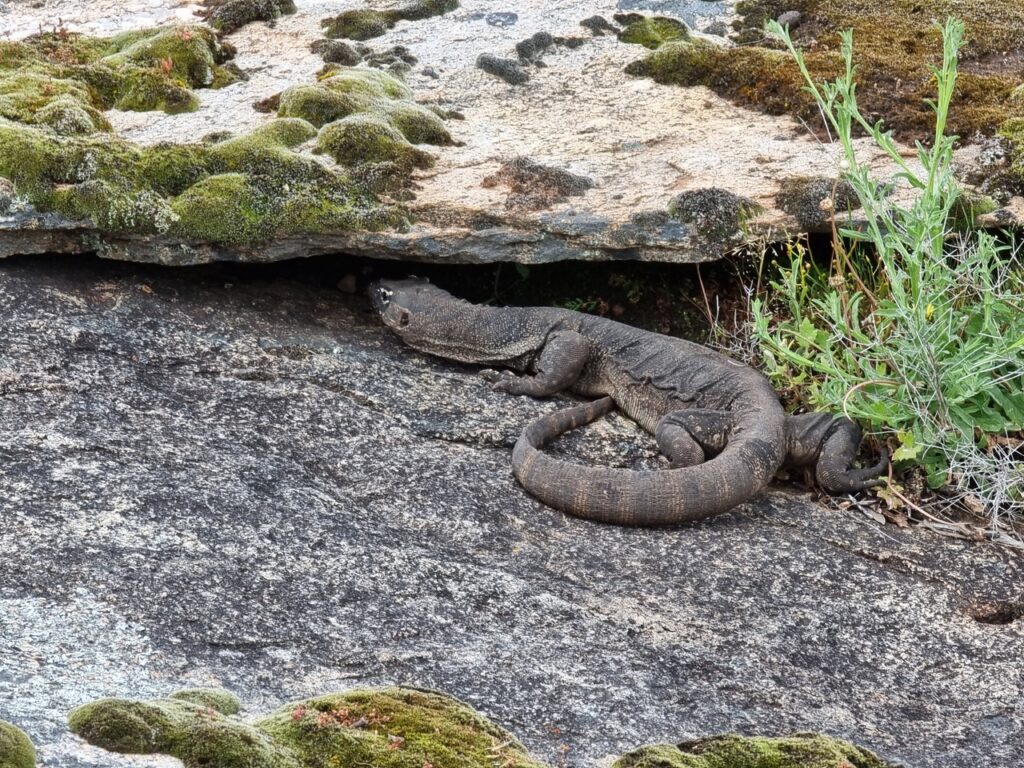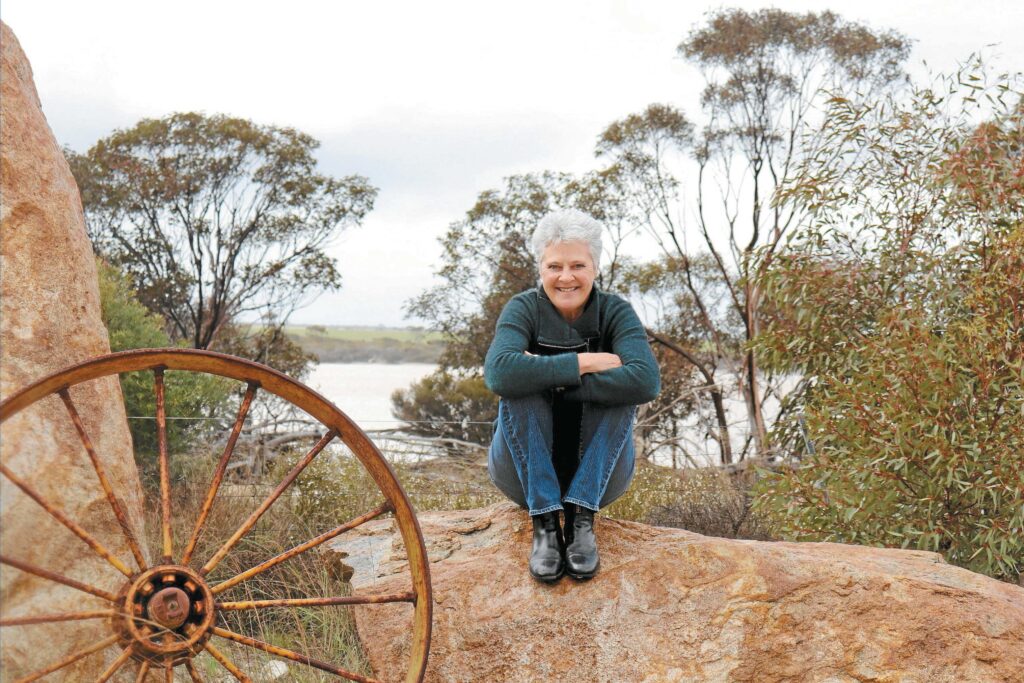Bobtail lizards (Tiliqua rugosa) are one of the species often found sheltering under lizard traps. Photo: Calistemon
Most visitors to inland granite outcrops are unaware of common the Aboriginal artefacts that can be found on site, such as the so-called “lizard trap”.
They have been constructed by Aboriginal people to help catch reptiles, and provide lizards with habitat and vital shade, according to Australian researchers.
Lizard traps are propped-up rock slabs on granite outcrops, and are of cultural significance to Noongars.

The researchers set out to see whether the traps are ecologically important, so they set up cameras at 135 sites around lizard traps, mainly in Two Peoples Bay Nature Reserve near Albany.
They found at least seven reptile groups used the traps for activities including cooling off and shelter.
In one day, they recorded reptile activity at 60 per cent of the monitored traps, suggesting they played an important role in providing additional habitats.

Local elder Lynette Knapp, one of the study’s authors, said lizard traps were created for human survival, and teach us that caring for Granite Country involves minimising disturbance, deep knowledge of the landscape, and multi-generational thinking.
CSIRO published the paper by UWA Albany researcher Suzie Cramp and others in the journal Pacific Conservation Biology on Monday.




